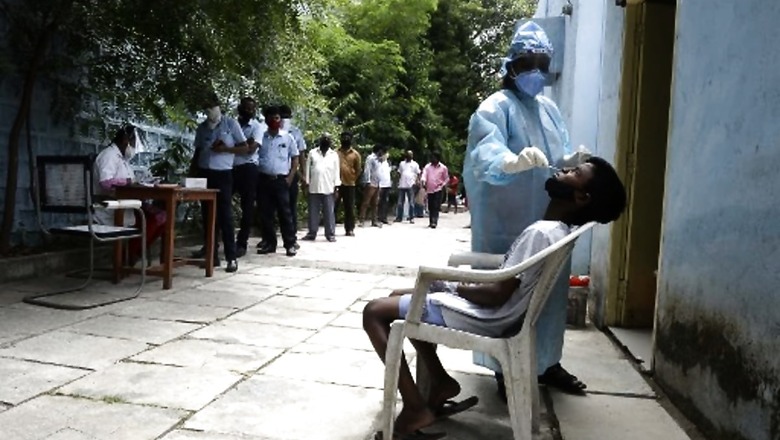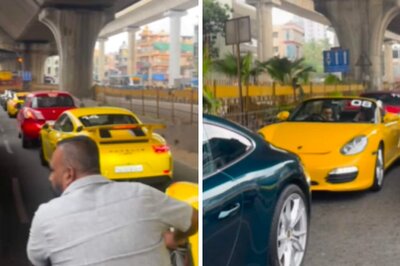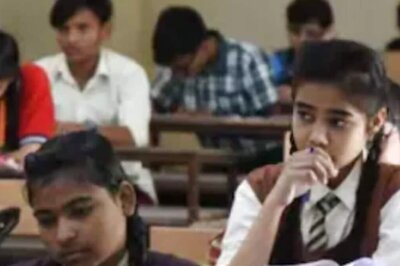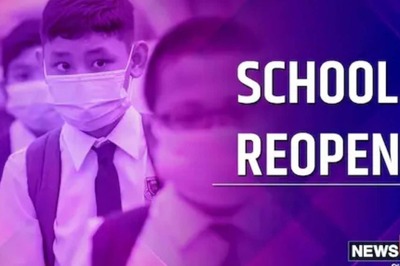
views
New Delhi: As Covid-19 cases surge so do worries about how to contain the spread of the disease that is spreading inexorably through India, initially in urban centres and now increasingly into the hinterland where medical infrastructure is scarce. Though there are no exact numbers about the spread of the virus into rural areas, there is enough evidence to suggest it has reached most corners of India and there is community transmission, say experts.
Just two figures could tell the story: an estimated 65 per cent of India's 1.3 billion population lives in rural areas. And, according to the website How India Lives, 714 districts in India have coronavirus cases, putting 94.76 per cent of the population at risk. "Increasingly, Covid-19 positive persons are being reported from small-sized towns, as well as from rural areas. Sero-surveys have revealed that the disease has spread to most parts of the country indicating community transmission of Covid-19," a group of public health experts said in a statement earlier this week.
The experts, from the Indian Public Health Association, Indian Association of Preventive and Social Medicine and the Indian Association of Epidemiologists, also expressed concern that reports of stigma, fear and discrimination continue even after six months.
A higher number of infections are being reported from semi-urban areas, said a Health Ministry official as India's Covid-19 tally raced past the 40 lakh mark on Saturday with 86,432 fresh cases. The death toll also climbed to 69,561 with 1,089 fatalities in a day. In the face of the relentless march of the disease India took just 13 days to go from 30 lakh to 40 lakh and is the third worst-hit nation by the pandemic after the US and Brazil in terms of cases and deaths the inescapable truth is that India's villages and semi-urban centres don't have the same facilities as bigger towns in terms of hospitals and laboratories to treat and test patients. Experts also stress the need for more data.
"There is not enough data yet to do a detailed comparison, but anecdotal reports suggest that testing is limited and not accurate enough to be a good measure of trends," Gautam Menon,professor, Departments of Physics and Biology, at Ashoka University said while discussing trends in rural districts. Explaining the trajectory of the disease, Sitabhra Sinha, professor at Chennai's Institute of Mathematical Sciences (IMSc), told PTI, "As of now, the bulk of the active cases are centred in the major urbanmetropolitan areas and their immediate surroundings."
"… places like Odisha which are still low in terms of numbers have a high R value – which means over the next few weeks, if the growth rate continues unabated, they may well turn out to be the new frontline in the fight against Covid," he cautioned.
R value is the reproductive number that indicates the number of people getting infected by an already infected person on an average. The incidence of the disease in the eastern state demonstrates the vulnerability of those in rural areas. Since more than 75 per cent of the state's population lives in rural areas, it is natural the infection rate is also high among villagers in comparison to towns and cities, an official in Bhubaneswar said.
More than 60 per cent of Odisha's cases are from rural areas and the number is rising as the pandemic gets prolonged, he said. Though the infection was mostly confined to urban areas till April end, it entered rural pockets after migrant workers left places such as Surat, Mumbai and Delhi to return home. Stage one of the infection was from people traveling to foreign countries. Stage two was those returning from the Tablighi Jamaat event in Delhi's Nizamuddin locality in March. The third stage of the infection, said Odisha's Covid-19 spokesperson Subroto Bagchi, came through people with a West Bengal link. And the fourth was when more than six lakh migrants returned to their home state. In neighbouring West Bengal, too, the incidence went up after the migrants started returning. This also added to the community transmission of the disease," a senior official of the West Bengal health department told PTI.
In the south, Tamil Nadu Health Secretary Dr J Radhakrishnan compared the fight against the coronavirus to a test match. The more aggressive we test-conducting about 76,500 RT PCR tests per daythe more the number of cases," said Tamil Nadu Health Secretary Dr J Radhakrishnan.
The state's health department will launch a programme to re-emphasise the importance of wearing masks, maintaining social distancing and hand washing. In Maharashtra, one of the country's worst hit by the pandemic, ruralareas had reported a rise in the number of fresh cases as well as deaths by the end of fifth month of lockdown in the state, said a senior state health official. He also cited the trajectory of the infection in August to make his point. As of August 26, there were 7,03,823 cases of COVID-19 in Maharashtra, of which 5,07,022 (72.03 per cent) were from municipal corporation areas. Similarly, out of 22,794 deaths reported, 17,423 (76.43 per cent) had taken place in municipal corporation areas and 5,371 inruralareas. But now the picture is changing, he said. With sizeable number of people have officially or unofficially travelled toruralareas, the infection has spread there as well followed by more deaths, the official said.
For instance, on August 1, there were 4,22,118 cases of COVID-19 in Maharashtra of which 3,36,740 (79.77 per cent) were from municipal coronation areas. Similarly, there were 14,994 total deaths in the state of which 12,543 (83.65 per cent) were from urban areas and 2,451 from rural areas, he said.
We have to admit that some people have illegally snuck intoruralareas and spread the virus, he said. Efforts are on to ramp up infrastructure at the grassroots level to meet the escalating challenge. In Andhra Pradesh, for instance, every primary health centre (PHC) and community health centre (CHC) in semi-urban and rural parts area is doubling up as a Covid Care Centre. According to government data, about 40 per cent of COVID-19 cases in recent weeks have been reported from rural areas.
"We have accordingly improved the infrastructure in PHCs and CHCs, so much so that they are now equipped with oxygen facilities as well to handle the caseload," state Health Commissioner Katamaneni Bhaskar told PTI The 104 service (mobile medical units) that makes rounds of villages is also coming handy to treat coronavirus patients at their doorstep.
"The good thing aboutruralareas is that they are not as compact and dense as urban areas, except a few so proper testing and isolating measures can control the outbreaks, said Dr Giridhar Babu of the Public Health Foundation of India and a member of Karnataka's technical advisory committee. In Puducherry, the numbers have gone up from three in April to 5,042 active cases and 10,279 who have been cured and discharged, according to Union Health Ministry figures on Saturday, hospital infrastructure and testing facilities are being improved, said Health Minister Malladi Krishna Rao.
Kerala, a state grappling with a resurgence in the number of cases, is doubling up on its efforts to make sure that everybody receives high-quality treatment. Now we have enough COVID First Line Treatment Centres (CFLTC), enough labs for testing, COVID care hospitals, more health workers, COVID brigade and other facilities which would help us to contain the pandemic when it reaches the peak, said Chief Minister Pinarayi Vijayan.
Officials in Telangana said the Greater Hyderabad Municipal Corporation (GHMC) area, the state capital region, has been the COVID-19 hotbed in the state but cases in the area have been mostly stable in recent weeks. However, there has been a rise in the numbers in rural Telangana. "We have earlier said the cases would gradually come down in the GHMC area by the end of August. We also said though there would be some uptick, the cases inruralTelangana would be under control by the end of September. The trend is as expected," state Director of Public Health G Srinivas Rao said. Officials in Madhya Pradesh estimate that the infection has spread its footprint in rural areas of 51 of the state's 52 districts. In neighbouring Gujarat, a bulk of its more than 97,000 cases have emerged from its seven main cities but the rural areas make up the rest In Goa, almost 50 per cent of COVID-19 cases are fromruralareas. According to the Health Department's data, rural areas such as Curchorem, Canacona, Valpoi and Sankhalim are the worst affected.
Vasco town was the first point of infection and from there it spread to the villages through government employees who travel from towns to their home back in villages. In Uttar Pradesh, however, officials said the infection is still urban centric. Surveillance teams and gram nigrani samitis' have been activated and the strategy is to conduct maximum number of tests and do intensive contact tracing. When the migrants had returned to the state, we had some problems, an official said, adding that 58,000 nigrani samitis' are working and the government already has a data base of 35 lakh migrants.
.



















Comments
0 comment